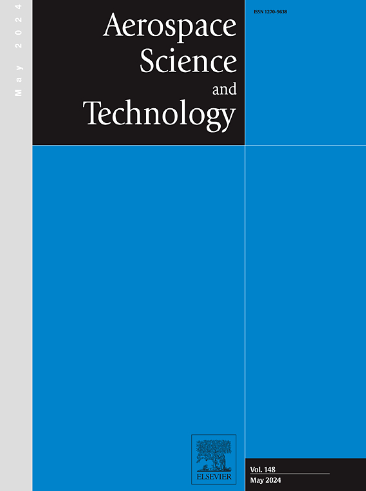A quasi-one-dimensional analytical study on the propulsive performance of an oblique detonation engine utilizing different inlets
IF 5
1区 工程技术
Q1 ENGINEERING, AEROSPACE
引用次数: 0
Abstract
Oblique detonation engines (ODEs) utilize standing oblique detonation waves (ODWs) to organize combustion, making them particularly well-suited for hypersonic air-breathing propulsion systems. Previous researches have predominantly concentrated on the flow physics of ODWs, with most experimental and computational studies employing a two-dimensional inlet or omitting the inlet’s compression process. Advanced inlet designs play a crucial role in enhancing the propulsive performance of air-breathing vehicles. This paper presents a comparative analysis of the specific impulse between an ODE vehicle equipped with a three-dimensional inward-turning inlet and one with a two-dimensional inlet at various design points, utilizing a quasi-one-dimensional performance analysis model specifically developed for ODE vehicles. Due to the superior total pressure recovery of the three-dimensional inward-turning inlet, the vehicle equipped with this inlet demonstrates enhanced thrust performance compared to its counterpart with a two-dimensional inlet, except under conditions of lower equivalence ratios (≤ 0.6). This paper systematically investigates the influence of flight altitude, flight Mach number, fuel injection parameters, combustor wedge angle, nozzle expansion area ratio, and nozzle flow model (chemical equilibrium flow and frozen chemistry flow) on the specific impulse of the vehicle, utilizing a quasi-one-dimensional performance analysis model. Among these factors, the flight Mach number, wedge angle, nozzle expansion area ratio, and nozzle flow model have a significant impact on the vehicle’s specific impulse. Additionally, the equivalence ratio and the total temperature of the fuel injection also play an important role in determining the specific impulse. To facilitate the engineering application of the ODE, it is essential to incorporate the three-dimensional inward-turning inlet into the ODE vehicle’s design.
斜爆震发动机不同进气道推进性能的准一维分析研究
斜爆震发动机(ode)利用驻斜爆震波(odw)来组织燃烧,使其特别适合于高超声速空气呼吸推进系统。以往的研究主要集中在odw的流动物理上,大多数实验和计算研究采用二维进气道或忽略进气道的压缩过程。先进的进气道设计对提高吸气式飞行器的推进性能起着至关重要的作用。本文利用专为ODE车辆开发的准一维性能分析模型,对安装三维内旋进气道和安装二维进气道的ODE车辆在不同设计点的比冲进行了对比分析。由于三维内旋进气道具有优越的总压恢复能力,除了在较低等效比(≤0.6)的情况下,配备该进气道的车辆与配备二维进气道的车辆相比,具有更强的推力性能。利用准一维性能分析模型,系统研究了飞行高度、飞行马赫数、燃油喷射参数、燃烧室楔角、喷管膨胀面积比、喷管流动模式(化学平衡流和冻结化学流)对飞行器比冲的影响。其中,飞行马赫数、楔形角、喷管膨胀面积比、喷管流动模型对飞行器的比冲影响较大。此外,当量比和喷油总温度也是决定比冲的重要因素。为了便于ODE的工程应用,将三维内旋进气道纳入到ODE的设计中是十分必要的。
本文章由计算机程序翻译,如有差异,请以英文原文为准。
求助全文
约1分钟内获得全文
求助全文
来源期刊

Aerospace Science and Technology
工程技术-工程:宇航
CiteScore
10.30
自引率
28.60%
发文量
654
审稿时长
54 days
期刊介绍:
Aerospace Science and Technology publishes articles of outstanding scientific quality. Each article is reviewed by two referees. The journal welcomes papers from a wide range of countries. This journal publishes original papers, review articles and short communications related to all fields of aerospace research, fundamental and applied, potential applications of which are clearly related to:
• The design and the manufacture of aircraft, helicopters, missiles, launchers and satellites
• The control of their environment
• The study of various systems they are involved in, as supports or as targets.
Authors are invited to submit papers on new advances in the following topics to aerospace applications:
• Fluid dynamics
• Energetics and propulsion
• Materials and structures
• Flight mechanics
• Navigation, guidance and control
• Acoustics
• Optics
• Electromagnetism and radar
• Signal and image processing
• Information processing
• Data fusion
• Decision aid
• Human behaviour
• Robotics and intelligent systems
• Complex system engineering.
Etc.
 求助内容:
求助内容: 应助结果提醒方式:
应助结果提醒方式:


